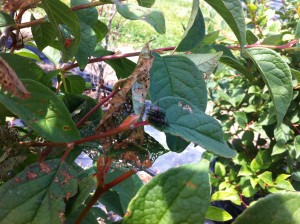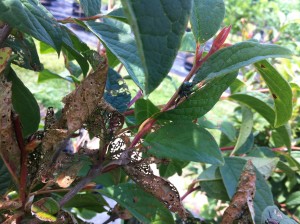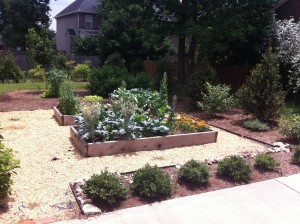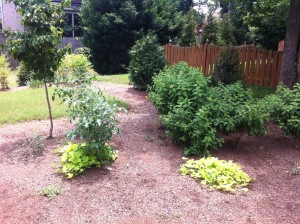Why do Japanese beetles eat the most beautiful leaves and flowers? I guess they must taste delicious… I got fed up and found a quick and easy way to eliminate them.
Supplies
Five gallon bucket
dish soap
water
Early Morning Procedure
Get a bucket, fill with one gallon of water and a dash of dish soap. Pick the beetles by hand and drop them in bucket. Forget about the bucket for one day and throw out. Repeat. Do this early in the day and the beetles will be sluggish and not fly away when disturbed.
If you dump the water from the bucket immediately, the beetles won’t drown. So wait a few hours before dumping.
What’s your best way to get rid of them?








